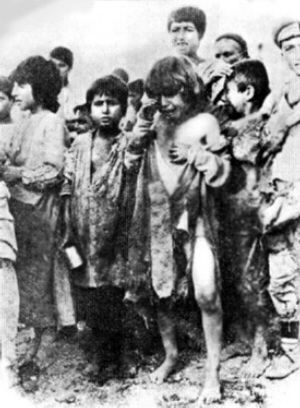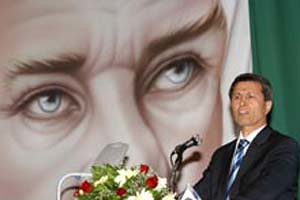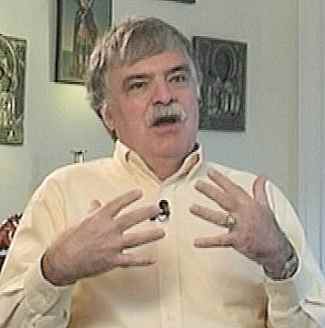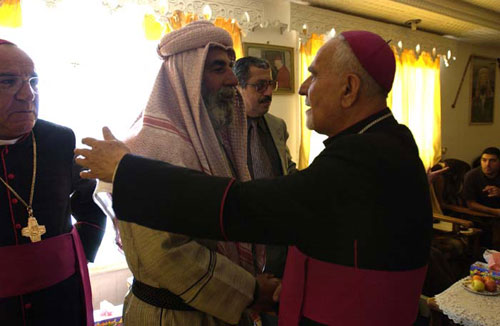 Van province
Van provincearlier this year, in March the famous
Akdamar church on
Akdamar island in northern Kurdistan was restored to a museum, this is one of the churches that almost survived the genocide and the
mass killings of Armenians and other christian groups by the young-Turks in 1915.
 Akdamar church is placed in a island in the middle of the lake of Van
Akdamar church is placed in a island in the middle of the lake of Van days ago, the
Kurdish leader of
Yerekdagi in the province of Van where the Holy Cross Church of complex is situated, purchased construction materials for repairing the roof of the church built in the 13
th century.
The headman of
Yerekdagi has turned to tourists who visit Van, including Armenians with a request to assign money for paying workers.
Before the year of 1914, there were almost 100 Armenian monasteries and more than 500 churches in the Van province.
 One of the Armenian monasteries in northern Kurdistan, the monastery was neglected in the last 10 years and requires urgent restoration.
One of the Armenian monasteries in northern Kurdistan, the monastery was neglected in the last 10 years and requires urgent restoration. eyewitness and survivor memories from the Armenian genocide,
Siranoush Simon
Toutounjian´s testimony :
Van had seven churches. There were also Catholics and Protestants, who had their schools and hospitals. But the Gregorian Orthodox Armenians were much more. We used to go to St. Astvadsadsin (Holy Virgin) Church.
In summer we went to the Varaga Monastery. It was a sacred place, and from different villages people came there. The Armenians gathered, sang and danced.
...Until 1915 we had political activists in Van as Vramian, Vahan Papazian, Artak Darbinian, Paramaz and Ishkhan. The Hnchaks could play a great role had they been able to keep secrets.
The future of the churches that remains is probably in great danger, the
Turkish government has problem keeping promises and
dont practise what they preach. An example is (according to an October 19
th report by
Bloomberg News) a church in
Diyarbakir (Armenian:
Dikgrangerd / Kurdish:
Amêd) which was under the Turkish government's official protection, was torn down by a construction firm. The article, written by Mark Bentley, added that, "builder
Kerem Emre used stones from the demolished church in the province of
Diyarbekir to lay the foundations for a mosque" in its place.
Read more "ANCA CONDEMNS TURKEY'S DEMOLITION OF ARMENIAN CHURCH IN DIKRANAGERD"The Armenian Church has traditionally maintained two patriarchates: one in Jerusalem and another in Istanbul. In Jerusalem, the Armenian Patriarchate is the guardian of the Holy Places in the possession of the Armenians, the Armenians
should rather relie their patriarchates then the turkish government.
 It was common that locals bought a christian orphan children from the Ottoman armies, it can be discussed if it is considered saving the life of a child or not.
It was common that locals bought a christian orphan children from the Ottoman armies, it can be discussed if it is considered saving the life of a child or not.








.jpg)































